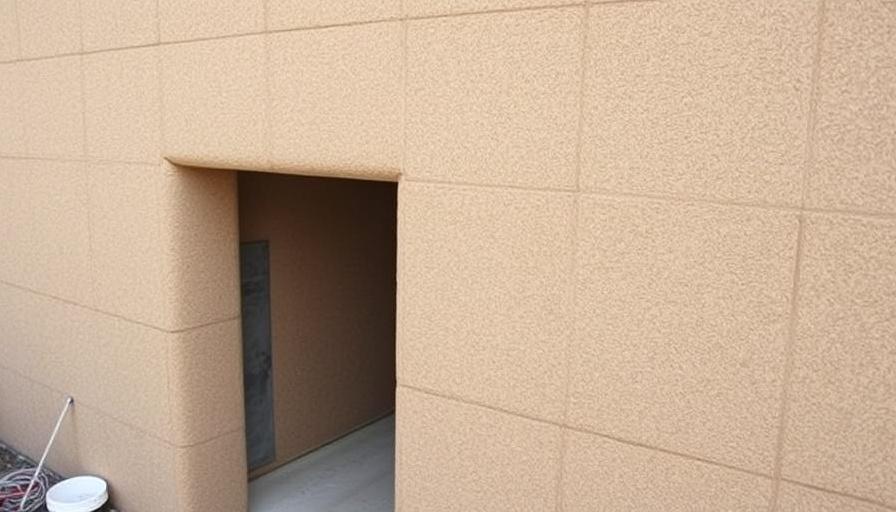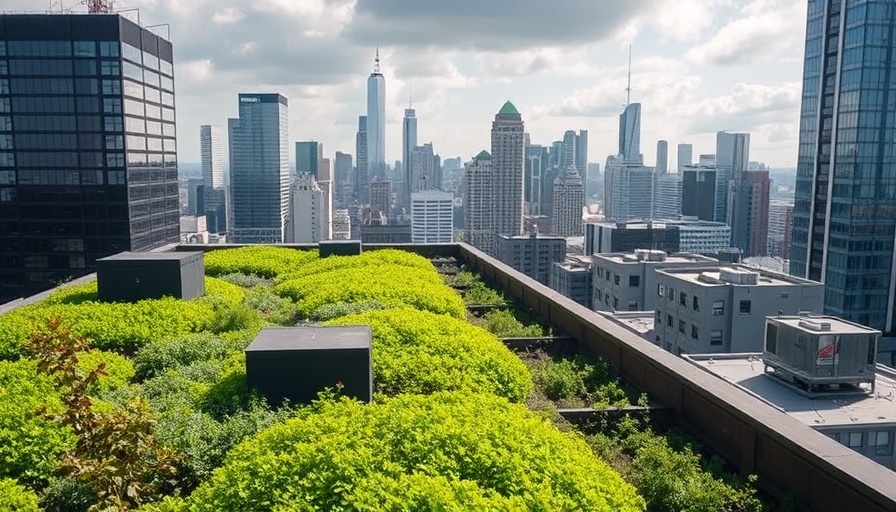
Understanding Hempcrete: A Brief Overview
As the construction industry continues to evolve, sustainable materials like hempcrete are gaining traction among homeowners and builders alike. Hempcrete, a biocomposite material made from the inner woody core of the hemp plant mixed with a lime-based binder, is renowned for its insulating properties, sustainability, and carbon negativity. As homeowners, particularly in the London area, steer towards eco-friendly living, understanding how hempcrete can serve as an alternative to traditional building materials becomes increasingly vital.
The Rising Popularity of Hempcrete Walls
The shift towards renewable and non-toxic building materials is a central theme in contemporary architecture. Hemp's slow acceptance was largely due to its association with cannabis, but public perception is changing. As awareness grows about the environmental benefits of using such materials, many projects are showcasing hempcrete's advantages. Its ability to regulate humidity and temperature adds to its appeal, making it an excellent choice for homes seeking comfort and reduced energy consumption.
Why Choose Hempcrete: Key Benefits
One of the primary advantages of hempcrete is its insulation properties. Unlike conventional concrete, hempcrete offers a breathable, lightweight alternative that significantly lowers energy costs and enhances indoor air quality. Additionally, its carbon sequestration abilities can contribute positively to reducing a building's overall carbon footprint. Hempcrete's resilience against pests and fire further solidifies its position as a reliable building material.
Integration of Hempcrete in Building Projects
For homeowners considering using hempcrete, it is essential to collaborate with builders familiar with the material. Its application differs from traditional wall assemblies; thus, construction practices must adapt accordingly. Various techniques have been successfully employed with hempcrete, such as using it within timber frames or as infill for masonry walls. In London, where damp weather can pose structural challenges, integrating hempcrete can provide natural moisture regulation, enhancing long-term durability.
Future Trends: The Role of Hempcrete in Sustainable Housing
Looking ahead, the demand for sustainable building practices is poised to increase, and materials like hempcrete will play a crucial role in this transition. Emerging regulations and incentives aimed at improving carbon-neutral construction practices can propel hempcrete from a niche material to a mainstream choice. As more homeowners seek green certifications for their properties, using hempcrete aligns perfectly with these pursuits, paving the path for a viable market shift.
Real Life Example: Successful Hempcrete Projects
A notable case in London is a residential project that utilized hempcrete to create a climate-responsive building that combines innovative design with sustainable principles. Not only did the home achieve remarkable energy efficiency, but its implementation of hempcrete positively impacted the surrounding environment, showcasing how effective sustainable design can be.
Common Misconceptions About Hempcrete
Despite its benefits, several misconceptions regarding hempcrete persist. Many believe that hempcrete is merely another form of concrete and thus carries the same structural vulnerabilities. However, unlike traditional concrete, hempcrete is not load-bearing. Understanding these differences is essential for homeowners contemplating its use. Another common myth is that hempcrete is overly expensive; in reality, the potential energy savings and environmental benefits often outweigh the initial investment.
Actionable Insights for Homeowners
As you consider building or renovating your home, evaluating the benefits of hempcrete is an effective way to enhance both sustainability and energy efficiency. Engage with architects and builders who have experience with hempcrete. Additionally, research local regulations and incentives associated with using environmentally-friendly materials to maximize your building's potential.
In conclusion, exploring eco-friendly materials like hempcrete is not just an investment in sustainable living; it mirrors a broader movement towards environmental responsibility in the housing sector. To learn more about implementing such innovative strategies in your next building project, connect with local experts dedicated to green design.
 Add Row
Add Row  Add
Add 




Write A Comment